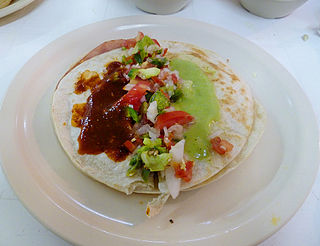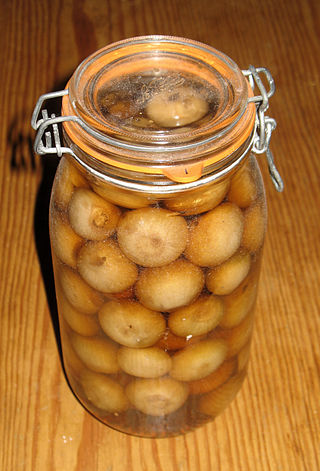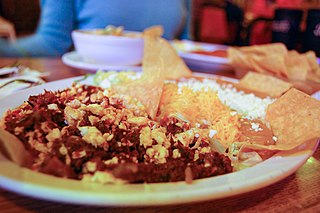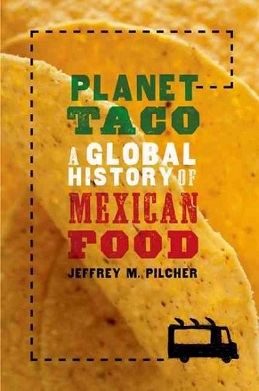Related Research Articles

A cereal is a grass cultivated for its edible grain. Cereals are the world's largest crops, and are therefore staple foods. They include rice, wheat, rye, oats, barley, millet, and maize. Edible grains from other plant families, such as buckwheat and quinoa are pseudocereals. Most cereals are annuals, producing one crop from each planting, though rice is sometimes grown as a perennial. Winter varieties are hardy enough to be planted in the autumn, becoming dormant in the winter, and harvested in spring or early summer; spring varieties are planted in spring and harvested in late summer. The term cereal is derived from the name of the Roman goddess of grain crops and fertility, Ceres.

The coyote, also known as the American jackal, prairie wolf, or brush wolf is a species of canine native to North America. It is smaller than its close relative, the gray wolf, and slightly smaller than the closely related eastern wolf and red wolf. It fills much of the same ecological niche as the golden jackal does in Eurasia, however, the Coyote is generally larger.

The Green Revolution, or the Third Agricultural Revolution, was a period of technology transfer initiatives that saw greatly increased crop yields. These changes in agriculture began in developed countries in the early 20th century and spread globally until the late 1980s. In the late 1960s, farmers began incorporating new technologies such as high-yielding varieties of cereals, particularly dwarf wheat and rice, and the widespread use of chemical fertilizers, pesticides, and controlled irrigation.

Huevos motuleños is a breakfast food which originated in the town of Motul (Yucatán). The dish is made with eggs on tortillas with black beans and cheese, often with other ingredients such as ham, peas, plantains, and hot sauce. In addition to being served in many restaurants in Yucatán, Quintana Roo and Oaxaca, this breakfast dish is also common in Cuba and Costa Rica.

Guacamole is an avocado-based dip, spread, or salad first developed in Mexico. In addition to its use in modern Mexican cuisine, it has become part of international cuisine as a dip, condiment, and salad ingredient.

Recado rojo or achiote paste is a popular blend of spices. It is now strongly associated with Mexican and Belizean cuisines, especially of Yucatán and Oaxaca. The spice mixture usually includes annatto, oregano, cumin, clove, cinnamon, black pepper, allspice, garlic, and salt. The annatto seeds dye the mixture red, and impart a distinctive red-orange color to the food.

The acocil is a species of crayfish in the family Cambaridae. It is endemic to Mexico, where it is known from Jalisco and Puebla.

The quesadilla sincronizada is a flour tortilla-based sandwich made by placing ham, vegetables and a portion of Oaxaca cheese between two flour tortillas. They are then grilled or even lightly fried until the cheese melts and the tortillas become crispy, cut into halves or wedges and served, usually with salsa and pico de gallo, avocado or guacamole on top.

Pickled onions are a food item consisting of onions pickled in a solution of vinegar and salt, often with other preservatives and flavourings. There is a variety of small white pickled onions known as 'silverskin' onions; due to imperfections they are pickled instead of being wasted. They are frequently used as the distinguishing feature of a variation on the Martini cocktail, known as a Gibson.

Çoban salatası or choban salad is a salad that originated from Turkish cuisine and Azerbaijani cuisine consisting of finely chopped tomatoes, cucumbers, long green peppers, onion, and flat-leaf parsley. The dressing consists of lemon juice, olive oil, and salt.

Escamoles, known colloquially as Mexican caviar or insect caviar, are the edible larvae and pupae of ants of the species Liometopum apiculatum and L. occidentale var. luctuosum. They are most commonly consumed in Mexico City and surrounding areas. Escamoles have been consumed in Mexico since the age of the Aztecs. The taste is described as buttery and nutty, with a texture akin to that of cottage cheese.

A comal is a smooth, flat griddle typically used in Mexico, Central America, and parts of South America, to cook tortillas and arepas, toast spices and nuts, sear meat, and generally prepare food. Similar cookware is called a budare in South America. Some comals are concave and made of barro (clay). These are still made and used by the indigenous peoples of Mexico and Central America. Comals are similar to the American griddle or the Indian tawa, and are often used and named interchangeably with these.

A burrito in Mexico is, historically, a regional name, among others, for what is known as a taco, a tortilla filled with food, in other parts of the country. The term burrito was regional, specifically from Guanajuato, Guerrero, Michoacán, San Luis Potosí and Sinaloa, for what is known as a taco in Mexico City and surrounding areas, and codzito in Yucatán and Quintana Roo. Due to the cultural influence of Mexico City, the term taco became the default, and the meaning of terms like burrito and codzito were forgotten, leading many people to create new meanings and folk histories.

Garlic soup is a type of soup using garlic as a main ingredient. In Spanish cuisine, sopa de ajo is a traditional garlic soup made with bread and egg poached in chicken broth, and laced with garlic and sherry.

Arroz a la tumbada is a traditional Mexican dish prepared with white rice and seafood. In this specialty a sofrito is made with chopped tomato, onion, garlic and red pepper. Rice and fish broth or water is added, then seafood which may include shrimp, clams, crab, calamari and whitefish. The dish may be seasoned with fresh leaves of epazote, parsley, coriander and oregano. Arroz a la tumbada is traditionally cooked in a cazuela, which is a thick clay pot.

A taco stand or taquería is a food stall, food cart or restaurant that specializes in tacos and other Mexican dishes. The food is typically prepared quickly and tends to be inexpensive. Many various ingredients may be used, and various taco styles may be served. Taco stands are an integral part of Mexican street food. Tacos became a part of traditional Mexican cuisine in the early 20th century, beginning in Mexico City, as what had been a miner's snack began to be sold on street corners in the city. Shops selling tacos have since proliferated throughout Mexico and other areas with a heavy Mexican culinary and cultural influence, including much of the Western United States and most other larger American cities. More typical taquerías specialize in tacos, as expected, but in some localities it can be used to refer to restaurants specializing in burritos, where tacos themselves are less of a point of emphasis.

Carne seca is a type of dried beef used in Mexican cuisine.

Crema is the Spanish word for cream. In the United States, or in the English language, it is sometimes referred to as crema espesa, also referred to as crema fresca in Mexico. Crema fresca or crema espesa is a Mexican dairy product prepared with two ingredients, heavy cream and buttermilk. Salt and lime juice may also be used in its preparation. Crema's fat content can range between 18 and 36 percent. In Mexico, it is sold directly to consumers through ranches outside large cities, as well as being available in Mexican and Latin American grocery stores in the United States. Crema is used as a food topping, a condiment and as an ingredient in sauces. It is similar in texture and flavor to France's crème fraîche and sour cream.

Planet Taco: A Global History of Mexican Food is a non-fiction book by Jeffrey Pilcher, published by the Oxford University Press in 2012. Pilcher discusses the history of Mexican cuisine and Tex Mex cuisine as well as perceptions of the concept of "Mexican food" around the world.
References
- ↑ Gilman, Nicholas (December 2011). Good Food in Mexico City: Food Stalls, Fondas and Fine Dining. iUniverse. pp. 93–. ISBN 978-1-4502-9836-0.
- ↑ Álvarez Cordero, Rafael (2009). Gastérea o los secretos deleites del gusto. Plaza Y Valdes. pp. 88–. ISBN 978-6074020786. PKEY:IMCO10.